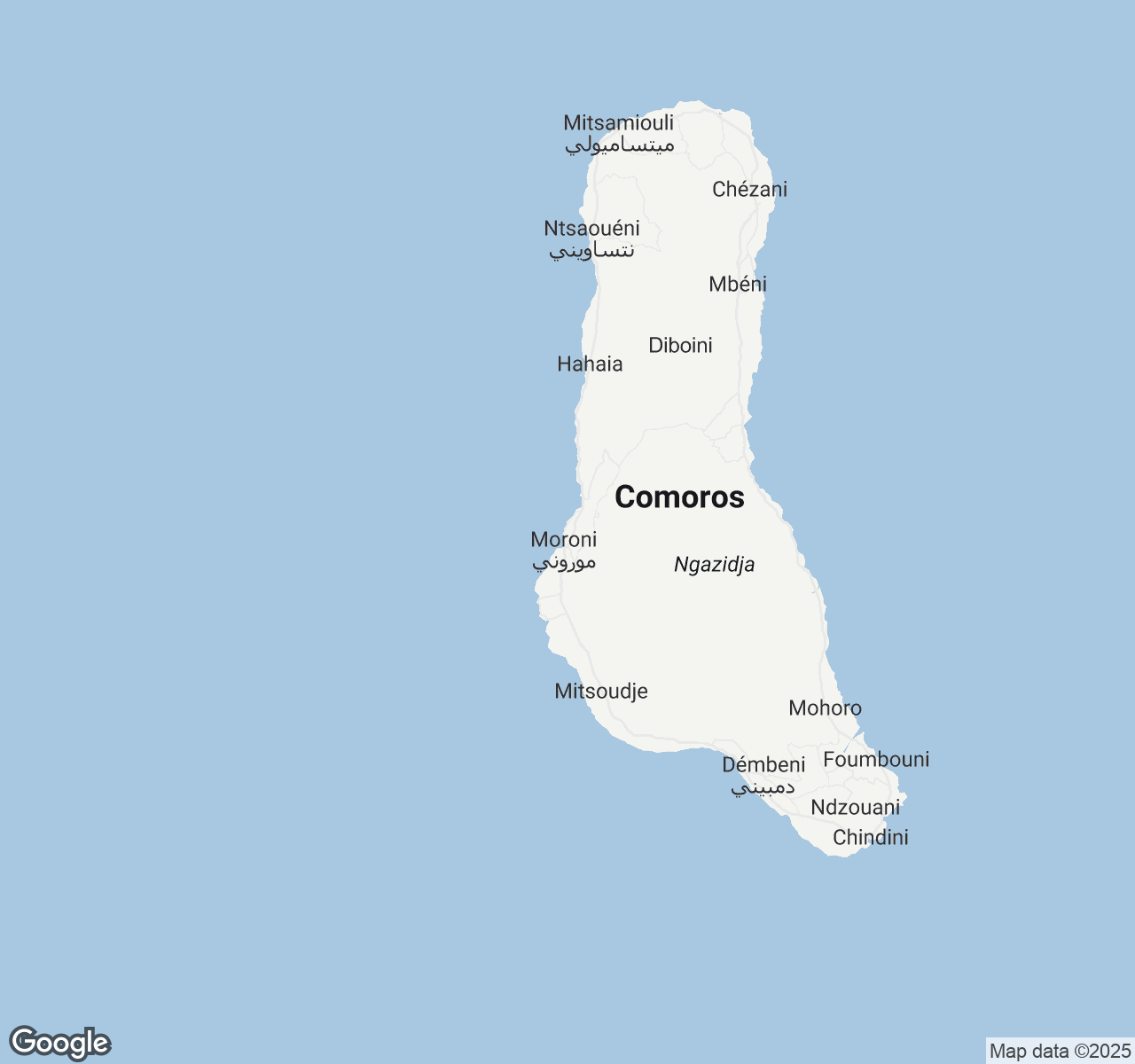
Things to Do in Moroni
Discover the best of Moroni
Plan Your Trip
Essential guides for timing and budgeting
Top Things to Do in Moroni
Discover the best activities and experiences. Book now with our trusted partners and enjoy hassle-free adventures.
Your Guide to Moroni
About Moroni
Moroni unfolds like a whispered secret along the azure shores of Grande Comore, where ancient minarets pierce tropical skies and the scent of ylang-ylang blossoms mingles with salt-kissed ocean breezes. This enchanting capital of the Comoros archipelago pulses with a rhythm uniquely its own—a mesmerizing blend of African soul, Arab heritage, and French colonial elegance. Stone houses adorned with intricate wooden balconies cascade toward the harbor, where dhows bob gently beside colorful fishing boats. In the medina's narrow alleys, spice merchants peddle cardamom and vanilla while women draped in busy shiromani fabrics glide past like living rainbows. The call to prayer echoes across volcanic peaks, harmonizing with the eternal percussion of waves against black sand beaches. Here, time moves to the tempo of tradition, where every sunset paints the Indian Ocean in molten gold and every dawn promises discoveries in this forgotten great destination that feels wonderfully removed from the rushing world.
Travel Tips
Transportation: Taxi-brousse (shared minibuses) are the primary transport around Grande Comore, costing 200-500 KMF per journey. For island hopping, book Inter-Îles Air flights in advance or take the cargo boat Salama (irregular schedule). Rent a 4WD for volcanic terrain exploration.
Money: Bring euros or US dollars as ATMs are unreliable. Exchange at BIC or BDC banks in Moroni center. Comorian franc (KMF) is the local currency (1 USD ≈ 450 KMF). Credit cards rarely accepted; carry cash for all transactions including hotels.
Cultural Respect: Dress modestly, especially women—cover shoulders and legs. Remove shoes before entering mosques or homes. During Ramadan, avoid eating/drinking publicly during daylight. Learn basic Comorian greetings like 'Bariza' (hello). Photography requires permission, especially of people and religious sites.
Food Safety: Stick to bottled water and avoid ice cubes. Try local specialties like langouste (lobster) and coconut curry at Hotel Itsandra or Restaurant Le Coraya. Street food can be risky—choose busy stalls with hot, freshly cooked items. Tropical fruits are generally safe when peeled.
When to Visit
The Comoros enjoys a tropical climate with two distinct seasons. The dry season (May-October) offers the most comfortable conditions, with temperatures ranging from 24-28°C (75-82°F) and minimal rainfall (50-100mm monthly). Southeast trade winds provide refreshing relief, making this peak season ideal for hiking Mount Karthala volcano and beach activities. Expect accommodation prices 30-40% higher during July-August European holidays. The hot, humid wet season (November-April) brings temperatures of 27-32°C (81-90°F) and heavy rainfall (200-400mm monthly), with cyclone risk from January-March. However, this period offers 25-35% lower prices and fewer crowds. The ylang-ylang harvest (October-March) perfumes the air, while green sea turtle nesting occurs November-February. Ramadan dates vary yearly but significantly impact daily life and restaurant hours. Cultural enthusiasts should visit during Maulidi celebrations (Islamic New Year, dates vary) or Independence Day (July 6th) for traditional dances and festivities. Budget travelers benefit from April-May and November shoulder seasons, combining reasonable weather with 15-20% lower costs than peak season.

Moroni location map